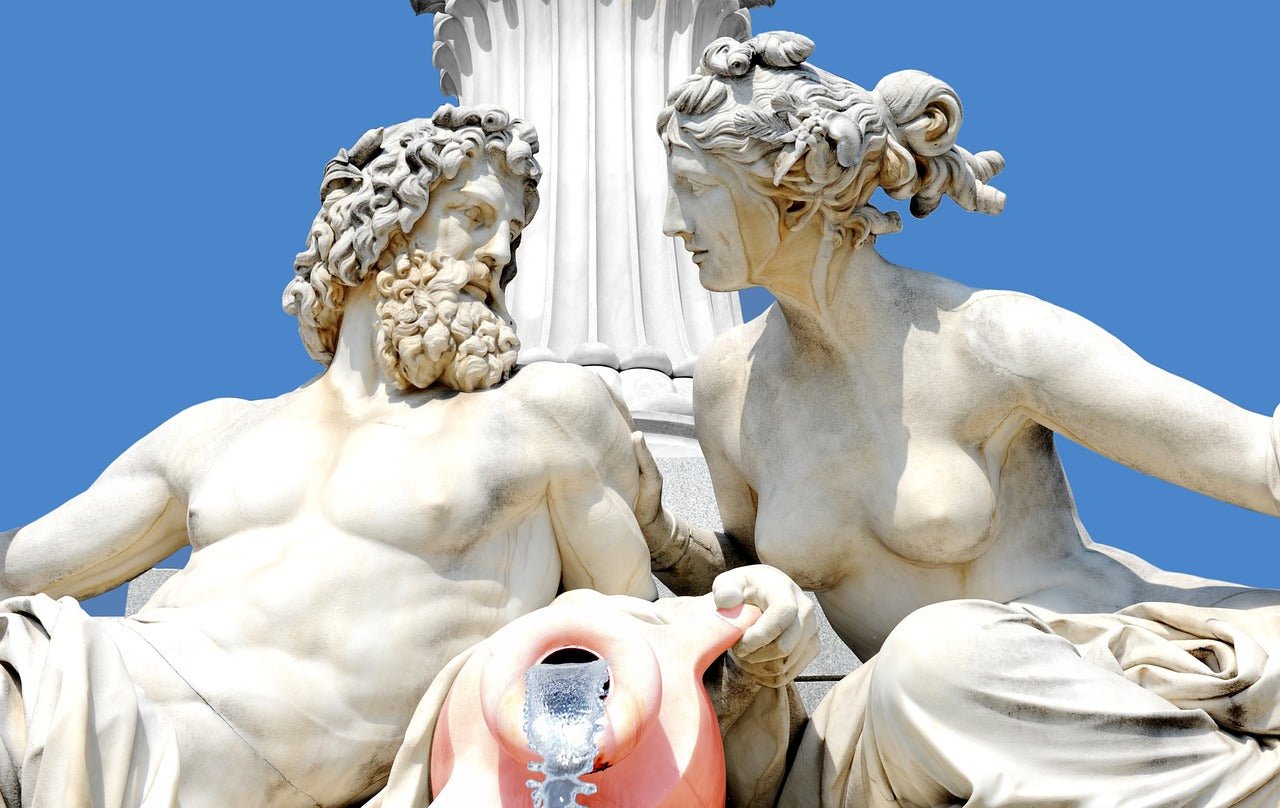
How The Greeks and Romans Changed the Way We Look at Art
Before the beautiful and majestic Renaissance came to life, and how modern art challenged the way we view art and aesthetics in general, there was a period of art where beauty was in all forms of conventional representation of gods, nature, and humans.
Thanks to the influence of the Greeks and Romans, how we think of human beauty was shaped. Since then, art has always been about human expression, but it was only the Greeks and Romans who introduced art as also being about beauty or aesthetics. This influence is being carried on to the present day, but its peak influence after the classical antiquity era was during the Renaissance in the 14th and 15th centuries, as well as the Neoclassicism period during the 18th and 19th centuries, a trend which was most influential around Europe.
Despite the massive and lasting influence it had for many centuries and generations of artists, classical art and the traditional way we look at beauty changed during the 20th century when modern artists took a different turn in the way they create. Such made an influence, though disapproved at first, by the public.
Nonetheless, Greek and Roman art will forever remain embraced and shall continue to make an impact on future generations of artists. If you want an in-depth exploration of Greek and Roman art, continue reading this article to learn more with us!

Classical art comprises the civilizations of Greece and Rome and is considered the foundation of Western civilization. Classical Art, which included advancements in paintings, sculptures, decorative arts, and architecture, followed standards of beauty, symmetry, and harmony, even as those values were altered with time.
While sometimes used for propaganda purposes, the human figure and human sense of space, as well as their connection with the gods, were important to the classical art of Greece and Rome. Other than the contribution to the ideals of beauty and harmony in art, Western civilization (in terms of culture, society, and population), cannot be fully understood without taking a look at Greek and Roman art.
The Wide Influence of Classical Art
Greek culture made significant contributions to western society throughout history. As stated earlier, art or aesthetics isn't the only thing they gave us. They also made massive contributions to philosophy, language, and political systems. However, we will focus more on Greek and Roman art for this article.
The Idea of Beauty:
The ideal human figure quickly became the most important topic of art in Greece, laying the groundwork for an idea of beauty that ruled many periods of Western art. The Greek concept of aesthetics was founded on a standard of proportion, which regulated the portrayals of male and female forms and was founded on the golden ratio and the ratio of lengths of body parts to one another.

Form and Sculpture:
While the beauty of white marble is associated with Greek and Roman sculpture and ruins in the Western tradition, most of the sculptures were originally polychrome, painted in several, vivid hues. Discoveries in the 18th century found several sculptures with indications of colors, but notable art historians disregarded the revelations as oddities.
Only in the late twentieth century did scholars agree that life-size figures and entire temple decorations were, in fact, vibrantly painted with multiple colors and decorations, raising many interesting questions about Western art history presumptions and uncovering that eons of classical imitations were not recreations but rather sentimental ideologies of the past.
Greek and Roman Art: What’s the Difference
The Greek and Roman Civilizations were divided by around 300 years, from the fifth to the ninth centuries. The ingenuity of the real manner by which Greeks raised their sculptures was much valued by Roman artists, who attempted to use the Greek-inspired style of figures standing upright. The main difference between Greek and Roman statues is the intent and importance of the bulk of the pieces.
When creating sculptures, the ancient Greeks concentrated on Greek gods and goddesses as a method of adoration and respecting their authority. Moving on to ancient Roman sculptors, combined the humanlike method of creating and sculpting well-formed men and women, but much of the emphasis of Roman sculpture was to pay honor to Roman emperors of the day.
While Greek religion is deemed secular by Christian norms, Roman art, particularly sculptural art, demonstrates the liberalization of theology from Greek beliefs to Roman values.
A closer look at art history shows that the Greeks were more focused on decorative arts and sculptures about their gods while the Romans emphasized their creativity for architecture and sculptures dedicated to their leaders.

Moreover, it is often viewed that the Greeks were very comparable to the Romans in terms of their levels of creativity. It has been a widely accepted notion to many that Roman art copied and imitated Greek art. However, it was not fully true. Accordingly, Roman art also had its originality while integrating influences not just from the Greeks, but also from Italic, Egyptian, and Estrucian culture.
Important Contributions of Greek and Roman Art
The Golden Ratio
The Greeks felt that truthfulness and beauty were inextricably linked, and prominent thinkers defined aesthetics primarily in mathematical language. "Measure and proportion reveal themselves in all areas of beauty and virtue," Socrates observed, while Aristotle pushed for the golden mean, or the middle course, which led to a good and noble existence by eliminating excesses.
The Greeks defined beauty as the union of proportion, symmetry, and harmony. The golden ratio, described by the mathematicians Pythagoras and Euclid as the ratio between two quantities, was regarded as the most attractive proportionality.

Architecture
Greek architecture, most renowned for its temples, stressed formal coherence via the use of a rectangular plan enclosed by columns open on all sides. The Greeks created the three orders - Doric, Ionic, and Corinthian - that were the primary architectural language of Rome and, later, most of the rest of the Western world.
On the other hand, with the creation of concrete in the third century, Roman architecture has been dubbed the Roman Architectural Revolution or the Concrete Revolution. The advancement of technology meant that the shape of construction was no longer bound by the restrictions of brick and mortar, leading to the inventive use of the arch, dome, etc.

Decorative Art
Decorative art in different objects such as vases, architecture, and so forth was a well-known feature of Greek art, and it is the greatest example of how Greek painting began with an emphasis on the human figure and progressed toward more realism. The first form was geometrical, incorporating motifs inspired by Mycenaean art, but it gradually shifted to the styled human figure.

Visual Art
Though Classical Art is best known for its sculpture and architecture, Greek and Roman painters pioneered fresco and panel paintings. The majority of what is known about Greek art comes from paintings on pottery and Etruscan and later Roman murals. More Roman panels and fresco paintings are preserved than Greek art. The 1748 exploration of Pompeii, a Roman city destroyed almost instantly by Mount Vesuvius' explosion in 79 CE, resulted in the remarkable discovery of several reasonably well-preserved frescoes in notable Roman villas.

Final Insights
We hope that you find this in-depth exploration of Greek and Roman art helpful for your journey through the arts and art history in general. Which do you prefer better? Greek, Roman art, or can you not choose between the two? Regardless of your preference, it is important to remember that they are equally important and influential throughout history.





